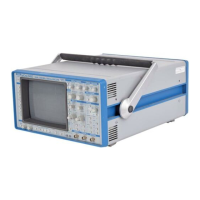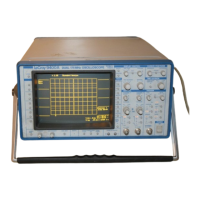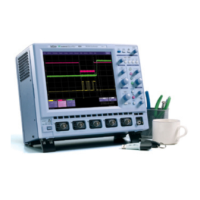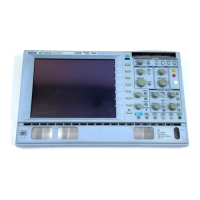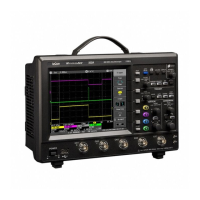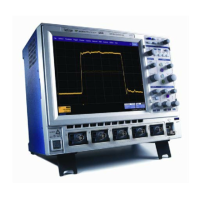11–1
11
Display
Setting Up the Display
DISPLAY SETUP Press
to view the DISPLAY SETUP menus (see page
11–6) and select from:
Ø Standard or XY Mode
Ø Single, Dual or Quad grids
Ø Persistence
Ø Dot Join
Ø Display and grid intensities
Ø “More Display Setup” menus.
Standard or XY Display? Standard Display Mode (menus page 11–6) allows presentation of
source waveforms versus time (or versus frequency for FFTs).
XY Display Mode (menus page 11–9) compares and contrasts one
source waveform with another, and is used when selected traces
have the same time or frequency span (time/div) and horizontal unit
(in seconds or Hertz). XY is automatically generated as soon as two
compatible traces are selected. If incompatible traces are selected,
a warning message is displayed at the top of the screen. And if
compatible traces are not matched in time, their XY diagram will be
displayed showing the shifting in time or in frequency between
them. (The ∆T or ∆f indicator is displayed in the Displayed Trace
Label at left-of-screen.)
Persistence In Persistence Mode, the oscilloscope can display points so that
they accumulate on-screen over many acquisitions. Persistence can
be used in either Standard or XY display. Eye diagrams and
constellation displays can be made using persistence, and the most
recent sweep can be displayed as a “vector” trace over the
Persistence display. Persistence is activated by selection of the
“DISPLAY SETUP” “Persistence” menu (11–6).
See: “Picturing Signal History”, in the Hands-On Guide, for
more details on using Persistence.
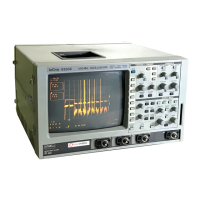
